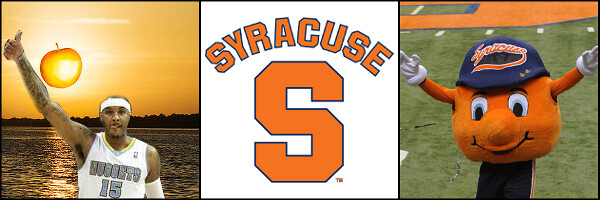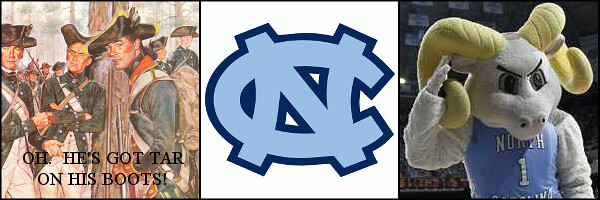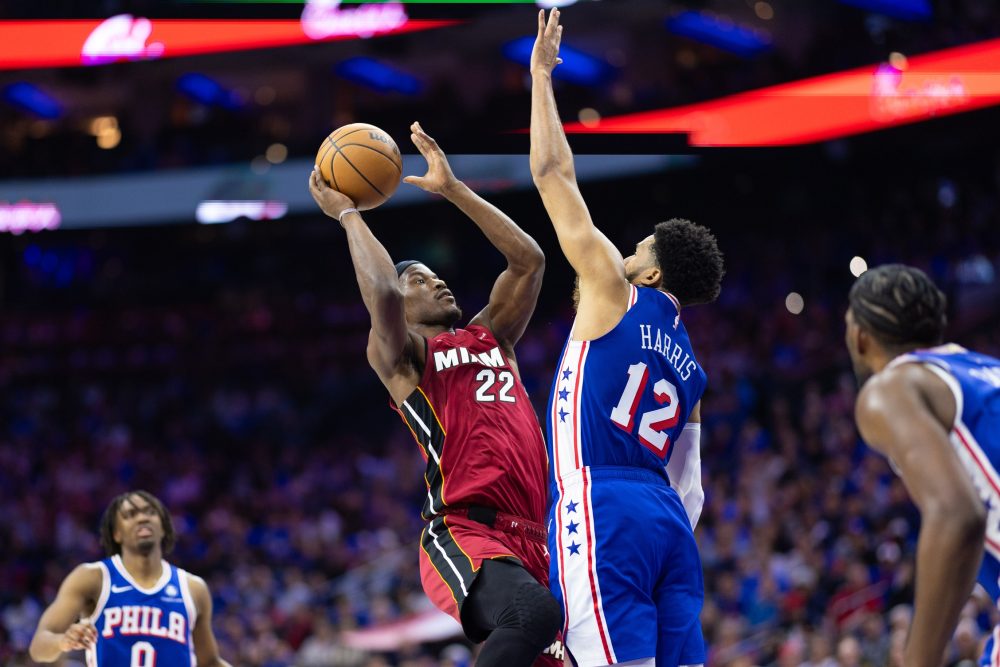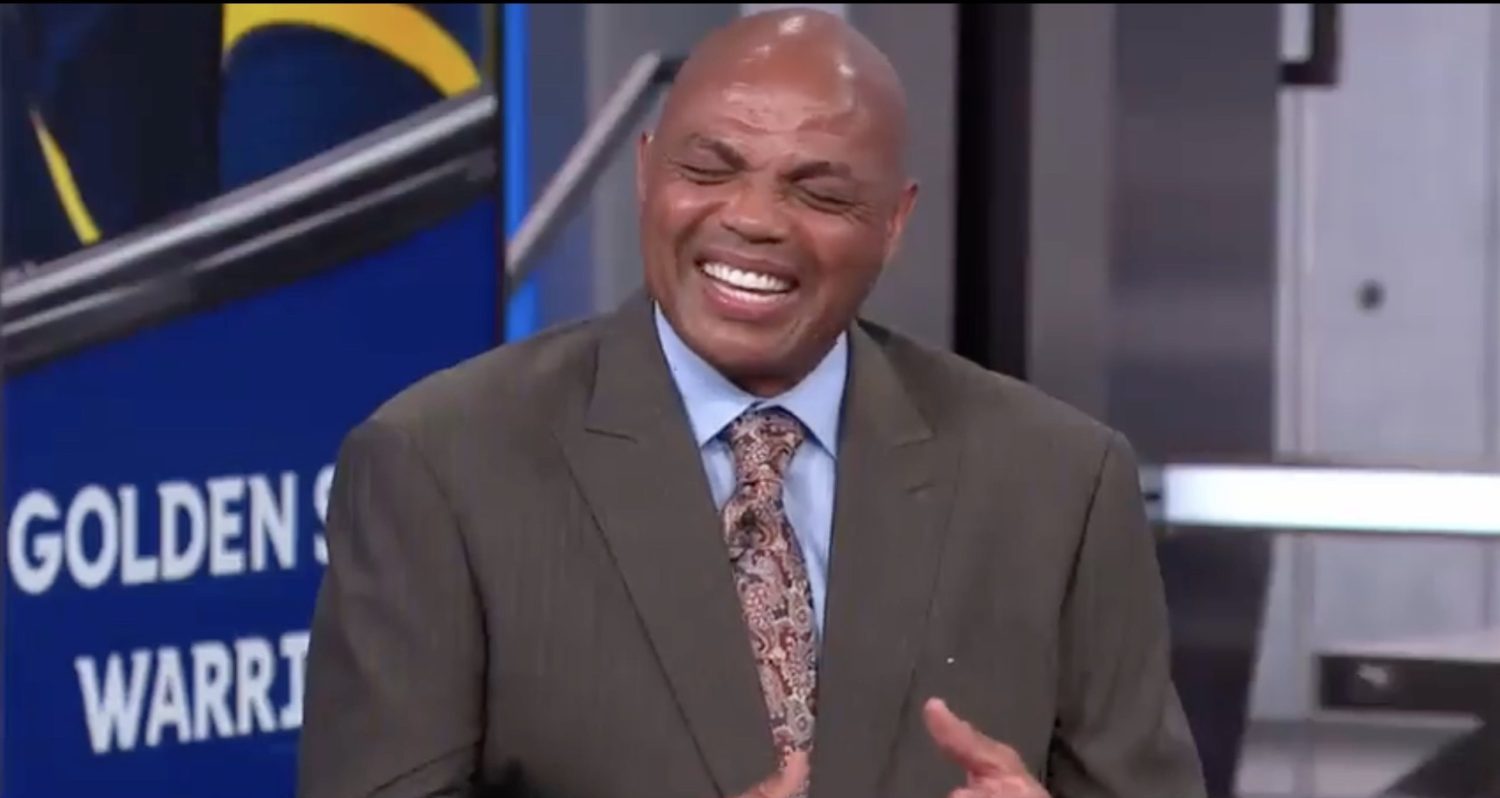College teams’ nicknames almost always are the schools’ calling card to their fans. Players may be the stars that attract most of them to the game, but team nicknames gives a level of identity to most of them even when they are no longer playing in college. Michael Jordan will always be a Tar Heel, Magic Johnson a Spartan, Chris Webber, Juwan Howard, and Jalen Rose are forever Wolverines.
So how do these colleges and universities get their monikers? What are Hoosiers? Why would Syracuse name their team after a fruit? Or what does Tar Heel mean? Let’s take a look at 11 of them.
Miami (FL) Hurricanes
The University of Miami named their team after their state’s most hated visitors.

Image courtesy of Top Bet
A strong weather disturbance that can flush away houses in a snap is what comes to mind when hearing the word Hurricane. Although it does not register any likeable memory to anyone, the University of Miami chose to be called “Hurricanes” but not because of its destructive nature.
Rather, the school’s officials gave their athletic teams the label Hurricanes to serve as a remembrance of a strong storm that hit the school’s area a few days before after it was opened.
Additionally, the school’s mascot, Sebastian the Ibis, was chosen because as stories have it, the Ibis was the last animal to leave when there’s a hurricane and also the first to come back once the storm has left.
Michigan Wolverines
How the Ohioans made Michiganians to call themselves Wolverines.
Image coutesy of ESPN
A Wolverine is not a fabulous animal. What it is, is a hungry, vicious, and ruthless predator. Are the people from the University of Michigan so hungry, so vicious, and so ruthless predators also for them to call themselves “Wolverines”?
Actually, the school adapted their team moniker from its home state’s nickname. So where did Michigan get this idea?
A territory dispute in 1835 got the Michiganians into a rife with the Ohioans. Rumors back in Ohio had the people from Michigan compared to Wolverines because of their behavior. Instead of getting insulted, Michiganians embraced the comparison and even called themselves Wolverines.
Gonzaga Bulldogs
Even in a loss, a school can have something good, like a new sports moniker.
When is it okay to be compared to dogs? For the football team of Gonzaga back in 1921, it seems to be just okay even after losing a 24-0 match. Anyway, had it not for that loss, they probably would not be called “Bulldogs”.
That year, Gonzaga was invited to play in San Diego for a Christmas Bowl game against the West Virginia University. As mentioned, they were beaten quite soundly in that game but despite the game’s results, a San Diego sportswriter applauded Gonzaga’s tenacity and aggressiveness earning them a comparison to a bulldog.
Who knows what could have been Gonzaga’s sports teams called had that football team won?
Syracuse Orange
How Syracuse got its teams named after a color.

Orange was not really the school’s original official color. It was rose pink and pea green then but due to its unpopularity, the university changed it to orange which symbolizes the golden apples of Hesperia and also reflects the story of the sunrise and hope for a golden future.
The varsity teams of the school were referred to as Orangemen and Orangewomen until 2004 when the school changed it to Orange citing gender neutrality as the reason.
To represent the color more, an orange fruit figure was made as a mascot. Named Otto the Orange, the mascot was officially recognized by the school in 1995.
Florida Gators
A story of father, son and a company manager who has no idea what an alligator is.
Could it be true that the University of Virginia played a major role in giving the University of Florida its “Gator” nickname?
The story goes that in 1907, Phillip Miller, a store owner in Gainesville, travelled to Charlottesville, Virginia to visit his son Austin who was enrolled at the University of Virginia. While in town, he also took a visit to a local store, the Michie Company, which sold books and pennants.
The elder Miller wanted to sell pennants bearing the University of Florida mascot back in Gainesville. But since the University did not have a mascot back then or a moniker, Austin suggested using an Alligator. To their surprise, the manager of Michie confessed he had no idea what it was so Austin took an image of the animal from the University of Virginia’s library.
Just in time for the beginning of the 1908 school year, Phillip’s orange and blue pennants went on sale which turned out to be a hit and eventually led into the Gators being the school’s official moniker.
Michigan State Spartans
Michigan State could have been the Michigan State Staters
In ancient times, the mere mention of Spartans sends shivers down the spines of any less courageous group of people. That’s like saying everyone other than the Spartans themselves since they are the bravest and toughest sons of Zeus on the planet. Naturally, this would fit very well into any college team as a moniker as it can represent how tough a squad is.
It was not the case early on with Michigan State. In 1925, the school wanted a new athletic moniker after using the nickname “Aggies”. A contest was held and the chosen winner was originally “Staters”.
Sportswriters of two local newspapers thought that the winning name was lame and unappealing especially when put on paper so they searched the losing entries for another that sounds better. Sure, the Staters have no chance of winning against the Spartans.
North Carolina Tar Heels
The University of North Carolina got its moniker from its home state’s best export.

By the simple process of burning pine trees, the state of North Carolina turned their state into one of the biggest producers of tar back in the days when wooden ships needed it for protection from rot.
One popular story explaining how the state became the “Tar Heel” state is that of North Carolina workers who emerged from the woods with their feet covered with tar, perhaps getting covered in it while working.
A more heroic story tells the tale of brave North Carolina soldiers who were left alone by retreating comrades in defending their position during a day in the American Revolutionary War. When the North Carolinians met the fleeing soldiers, they told them to put tar on their heels so they could “stick” in battle. No one knew if they did, but the state of North Carolina became glued to the “Tar Heel” nickname since.
Kansas State Wildcats
Three coaches, three name changes.
More often than not, when a new coach of any sports team takes charge, he goes straight to the drawing board and tackles what game strategies he would implement. But sometimes, he would rather give his team a new moniker first. The Kansas State “Wildcats”, can attest to that.
In 1915, Kansas State hired John Bender to be the football team’s coach. Immediately, he called his team the Wildcats. However, the nickname only lasted for just a year. The same length of Bender’s coaching stint.
Then in 1917, under new coach Z.G. Clevenger, the team changed its nickname to “Farmers”. Perhaps realizing that the Farmers label intimidates no one, the team’s coach in 1920, Charles Bachman, renamed the team Wildcats. Since then, the Kansas State University’s sports teams were known by that nickname.
Butler Bulldogs
A wandering fraternity mascot inspired Butler to call themselves Bulldogs
Before they were called “Bulldogs” in 1919, the Butler University’s varsity squads were referred to as “Christians”. So what happened that year which changed the way people call Butler?
That year, Butler does not have much to celebrate when it comes to football. Their team had lost too many games that it affected even the moral of their most rabid supporters. Enter Butler’s school paper Collegian editor Alex Cavins and his staff.
The group thought that the school must come up with something that would give spark to the team, something that could spark their spirits. While in the middle of discussion, a Butler fraternity’s bulldog mascot named Shimmy entered the Collegian office and inspired Cavins. The next release of the Collegian showed a drawing of Shimmy the bulldog going after a figure labelled as John the Baptist, which was a representation of Butler’s next opponent, Franklin Baptists.
The Bulldog gimmick caught on and has been used by the school ever since.
Indiana Hoosier
From Hoosier’s men to Hoosier’s nest, Indiana University sure has an interesting nickname.
The state of Indiana has always been known as the “Hoosier” state. Though there is no factual explanation of where the term originated, the stories however are colorful.
Poet James Whitcomb thinks that Hoosier was derived after a brutal bar brawl, which happened in the days of early state settlers, where ears that were cut-off cluttered the floor. One man stepped on one of those ears and asked “Whose ear?”
No one knows whether the owner of the ear ever got it back but history is listening, thus it might probably be just the origin of the Hoosier.
Duke Blue Devils
Duke could have been called “The Polar Bears” or “The Blue Warriors”.
What fueled Duke’s inspiration of naming its athletic teams Blue Devils is not their sheer luciferian desire to beat the hell out of rival North Carolina. Instead, it was derived from a French Military squad called the Chasseurs Alpins. Because of the squad’s unique uniforms, they were given the nickname "les diables bleus" which in English is “The Blue Devils”.
The name Blue Devils was chosen by campus student leaders and editors of the school’s publications from a list that included the likes of Blue Titans, Blue Eagles, Polar Bears, Royal Blazes, or Blue Warriors. This happened during the 1922-1923 academic year; the time when World War I was about to end and the school was welcoming back returning veterans. This erased some of the lingering suggestions that the name “Blue Devils” was anti-religious. Though the use of the moniker was not official during its first year, the use continued until it got stuck into permanency.
So there you have it. That’s 11 schools with different stories on how each got their respective athletic teams’ nicknames. Looking at these stories alone tells how deep the tradition is of each school not to mention the history that comes along with it. This in part reflects how passionate the country is with college sports. It will once again be in full display this March when the NCAA Basketball season parades the best schools in the nation each competing in the annual staging of the March Madness.





